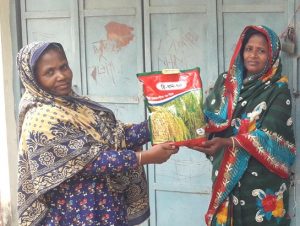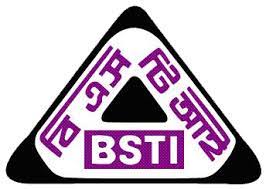From Danielle Nierenberg
To celebrate summer, Food Tank has gathered 18 of the latest books in food and agriculture. These books highlight how to make better dietary choices, improve food policy and advocacy, and explore the possibilities of animal welfare, seasonal eating, and environmentally healthy lifestylesOur picks for this summer include: Blessing the Hands that Feed Us: Lessons From a 10-Mile Diet, by Vicki Robin, Canned: The Rise and Fall of Consumer Confidence in the American Food Industry, by Anne Zeide, Closer to the Ground: An Outdoor Family’s Year on the Water, in the Woods, and at the Table, by Dylan Tomine, The Community Food Forest Handbook: How to Plan, Organize, and Nurture Edible Gathering Places, by Catherine Bukowski and John Munsell, Eat for the Planet: Saving the World One Bite at a Time, by Nil Zacharias and Gene Stone, Food and Animal Welfare, by Henry Buller and Emma Roe, Food Policy in the United States, by Parke Wilde, Forage, Harvest, Feast: A Wild-Inspired Cuisine, by Marie Viljoen, Formerly Known as Food: How the Industrial Food System is Changing Our Minds, Bodies, and Culture, by Kristin Lawless, Good Apples: Behind Every Bite, by Susan Futrell, How to Nourish the World, by Hans R. Herren, The Natural Cook: Eating the Seasons from Root to Fruit, by Tom Hunt, Nourished Planet: Sustainability in the Global Food System, by the Barilla Center for Food & Nutrition and Danielle Nierenberg (editor), One Shot: Trees as Our Last Chance for Survival, by John Leary, Plant Powered Beauty: The Essential Guide to Using Natural Ingredients for Health, Wellness, and Personal Skincare (with 50-plus Recipes), by Amy Galper and Christina Daigneault, RetroSuburbia: The Downshifter’s Guide to a Resilient Future, by David Holmgren, The Story of Soy, by Christine M. Du Bois, and Why You Eat What You Eat: The Science Behind Our Relationship with Food, by Rachel Herz, PhD.
Contributing Author: Alaina Spencer.
These books tackle topics like food policy, animal welfare, and seasonal eating and allow readers to travel to Australia and Puget Sound without ever having to leave home.
1. Blessing the Hands that Feed Us: Lessons From a 10-Mile Diet, Vicki Robin Robin takes the term local to heart by embarking on a month-long experiment eating only foods sourced within a ten-mile radius of her home on Whidbey Island. She reconnects with her community, environment, and body as she learns to rely less on packaged goods and more on her neighbours. Blessing the Hands that Feed Us tells the personal story of Robin, but extends to universal lessons on ways to better live within the confines of the community.
2.Canned: The Rise and Fall of Consumer Confidence in the American Food Industry, Anne Zeide Because of the industrial food system, food shifted from family farms to large-scale productions requiring packaging and canning. Consumers moved from regularly producing their own food to relying on pre-packaged goods. Zeide chronicles this change through the story of the canning industry, explaining how food industry leaders used science, marketing, and politics to convince the hesitant public.
3.Closer to the Ground: An Outdoor Family’s Year on the Water, in the Woods, and at the Table, Dylan Tomine Tomine shares his love of nature with his children as they forage, gather, cook, and eat from the natural world around Puget Sound. Closer to the Ground tracks the uncertainty of weather, explores the local land, and offers seasonal recipes while teaching readers to live like children, full of curiosity and adventure. As a fly-fishing guide and conservation advocate, Tomine shows readers how to live harmoniously with the natural world.
4.The Community Food Forest Handbook: How to Plan, Organize and Nurture Edible Gathering Places, Catherine Bukowski and John Munsell Forthcoming July 2018 Community food forests are springing up across the United States to create greater access to nutritious food and enhance environmental stability. In this book, Bukowski and Munsell provide a guide to implementing and sustaining community food forests including building engagement, working with diverse peoples, navigating public policy, and managing site evolution. By diving into the civic aspects of establishing community food forests, Bukowski and Munsell provide the roadmap for people to come together, create change, and provide a site that can feed all people.
5.Eat for the Planet: Saving the World One Bite at a Time, Nil Zacharias and Gene Stone Sharing new research, Zacharias and Stone explain how everyone can play a part in reducing climate change through their food choices. Eat for the Planet presents interesting infographics and strong arguments to support the evidence that minimal, everyday changes influence the health of the environment. By switching out meat for more plant-based meals, anyone can have a significant and positive impact on the Earth. As Zacharias and Stone believe, one bite at a time can save the world.
6.Food and Animal Welfare, Henry Buller and Emma Roe Buller and Roe bring together new research and case studies to guide readers through animal welfare issues beginning at the farm and ending at the plate. Food and Animal Welfare investigates the ways animal welfare is defined, advocated, and implemented. The book goes on to explore the possibilities of a standard of care for animals and the ethics of selling welfare as a product.
7.Food Policy in the United States, Parke Wilde In this second edition of Food Policy in the United States, Wilde updates all recent matters impacting U.S. food policy. This includes policy changes in the 2014 Farm Bill and possibilities in the next one, the end of the Trans-Pacific Partnership treaty, halted child nutrition legislation, changes in food-labelling, and influences of the 2016 presidential election. This edition uses real-world controversies to examine economic principles, various policies, and nutrition science with a greater focus on food justice, sustainable agriculture, and food security.
8.Forage, Harvest, Feast: A Wild-Inspired Cuisine, Marie Viljoen Forthcoming August 2018 In her new cookbook, Viljoen aims to make foraging and collecting wild foods accessible and understandable to the average cook. Not only does the work present recipes for cocktails, entrées, desserts, and fermented foods, but Forage, Harvest, Feast also gets the reader out into the world of foraging to create deeper connections with foods. Viljoen highlights native plants that are unused and forgotten to bring them back into the culinary scene. She also emphasizes the use of invasive plants that hold economic and culinary potential. By focusing on both native and invasive plants, Viljoen hopes bring together new flavours and dishes and connect people to their food.
9.Formerly Known as Food: How the Industrial Food System Is Changing Our Minds, Bodies, and Culture, Kristin Lawless Author, journalist, and nutritionist, Kristen Lawless, chronicles how the industrial food industry is changing our food preferences, influencing our brains, altering our microbiota, and impacting our gene expressions. In Formerly Known as Food, Lawless suggests that our degrading diet is actually changing our bodies. She makes the case for how this is happening and what it means for our survival. This book sheds light on just how influential the industrial food industry is on our bodies, our society, and our future.
10.Good Apples: Behind Every Bite, Susan Futrell Futrell takes readers into the orchards, storage rooms, laboratories, warehouses, and marketing meetings to explain how consumers and eaters can support the farms providing food for our communities. She goes deep into the growth and distribution of apples to illustrate just how much and what is at stake in the way we set up our food system. Good Apples explains the ecological and economic constraints that apple growers, pickers, and buyers face displaying the importance of supporting family farms.
11.How to Nourish the World, Hans R Herren How to Nourish the World tells how Herren’s foundation, Biovision, develops and applies ecological methods to enhance self-sufficiency of people living in Kenya, Uganda, Tanzania, and Ethiopia. Biovision spreads their understanding of the environment to local peoples through grassroots projects like the cultivation of medicinal plants and teaching malaria prevention. This book displays how Herren and Biovision work to improve people’s lives by preparing and exchanging knowledge about the natural world.
12.The Natural Cook: Eating the Seasons from Root to Fruit, Tom Hunt Hunt teaches cooks and eaters alike how to make simple, delicious meals without wasting anything. The Natural Cook highlights seasonal, flavorful, and plant-based dishes with a focus on 26 seasonal ‘hero’ ingredients. Three easy cooking techniques accompany each of the 26 featured ingredients showing readers how to make a quick, simple dish. After the techniques, Hunt gives three globe-inspired recipes to incorporate even more seasonal produce. Following each recipe are Hunt’s notes giving readers tips and tricks on using the leftover or extra produce so nothing gets thrown away.
13.Nourished Planet: Sustainability in the Global Food System, Barilla Center for Food & Nutrition and Danielle Nierenberg (editor) As the global food system grows ever larger and more intertwined, Nourished Planet provides a comprehensive roadmap to feed the world sustainably. The book contains essays and interviews with international experts in all food system fields including farming, environmentalism, activism, and economics. In coming together, these professionals offer a new path toward global sustainability to include growth, culture, and health for everyone.
14.One Shot: Trees as Our Last Chance for Survival, John Leary One Shot is the story of how Leary believes we can reverse desertification, water scarcity, hunger, poverty, and climate change by restoring agricultural lands with various combinations of trees and crops. Based off of his fifteen years doing humanitarian work with failing communities, Leary tries to explain the impact of the world’s agriculture on peoples and the environment.
Spanning the globe from Africa to America, One Shot connects the world’s most urgent challenges to agricultural practices and offers hope in the restoration of forest gardens and tree planting.
15. Plant Powered Beauty: The Essential Guide to Using Natural Ingredients for Health, Wellness, and Personal Skincare (with 50-plus Recipes), Amy Galper and Christina Daigneault Natural beauty experts, Galper and Daigneault, unmask the secrets of the beauty world by telling readers how to understand beauty labels, deconstruct ingredient lists, make educated choices about products, and better know how their skin works. In addition to demystifying beauty products, Plant-Powered Beauty contains more than 50 simple recipes to create plant-based skincare and beauty products that work with your skin. This book connects readers back to natural beauty through plants and healthy living.
16. RetroSuburbia: The Downshifter’s Guide to a Resilient Future, David Holmgren This Australian-based book provides a manual for readers to downshift and simplify their homes, backyards, gardens, neighbourhoods, and lifestyles to be better organized and sustainable for the future. While the book encourages the reader to dramatically change their life, it promises a more meaningful and hopeful way of life. RetroSurbia is divided into three overarching sections: the Built, the Biological, and the Behavioral to clearly guide readers on their path to simplicity and resilience.
17.The Story of Soy, Christine M. Du Bois The Story of Soy traces the history of soy from ancient Asia to the twenty-first century tracking the vastly differing views of soy along the way. Traversing the globe and time, Du Bois examines the diverse subjects of soy including its place in disaster relief, its influence on meat production, its impact on international conflicts, and its often controversial nutrition benefits.
From the Buddhist missionaries to the European colonialists, The Story of Soy tells an overlooked account of one of the world’s biggest crops.
18.Why You Eat What You Eat: The Science Behind Our Relationship With Food, Rachel Herz, PhD
In Why You Eat What You Eat, neuroscientist Rachel Herz explores how psychology, neurology, and physiology shape and influence our eating habits, taste preferences, and food consumption. Herz reveals various factors that influence our eating patterns, including the way our beliefs affect the amount of calories burnt, the influences of television on how much we eat, and how our physical surrounding impacts how food tastes. By examining our complicated relationship with food, Herz offers tips and techniques to improve our experience and relationship with food.
(Danielle Nierenberg is President of Food Tank and an expert on sustainable agriculture and food issues. She has written extensively on gender and population, the spread of factory farming in the developing world and innovations in sustainable agriculture.)




